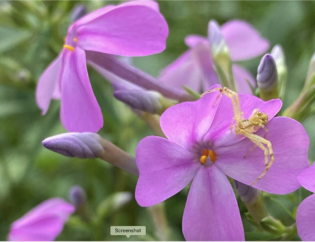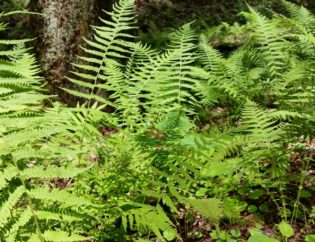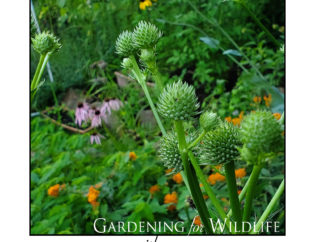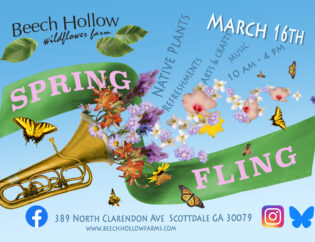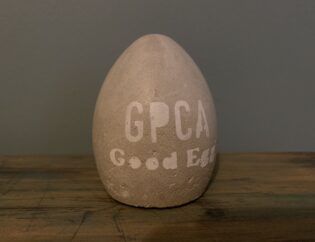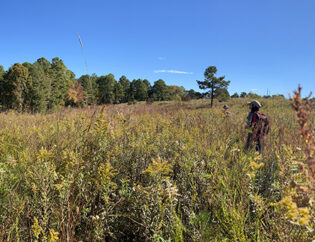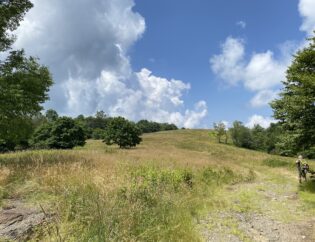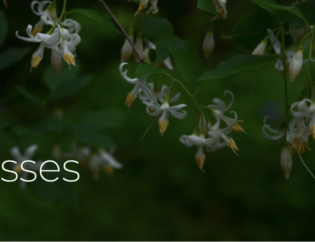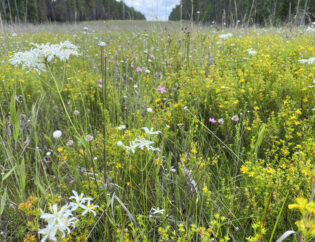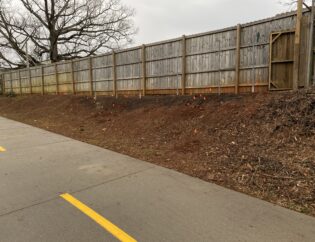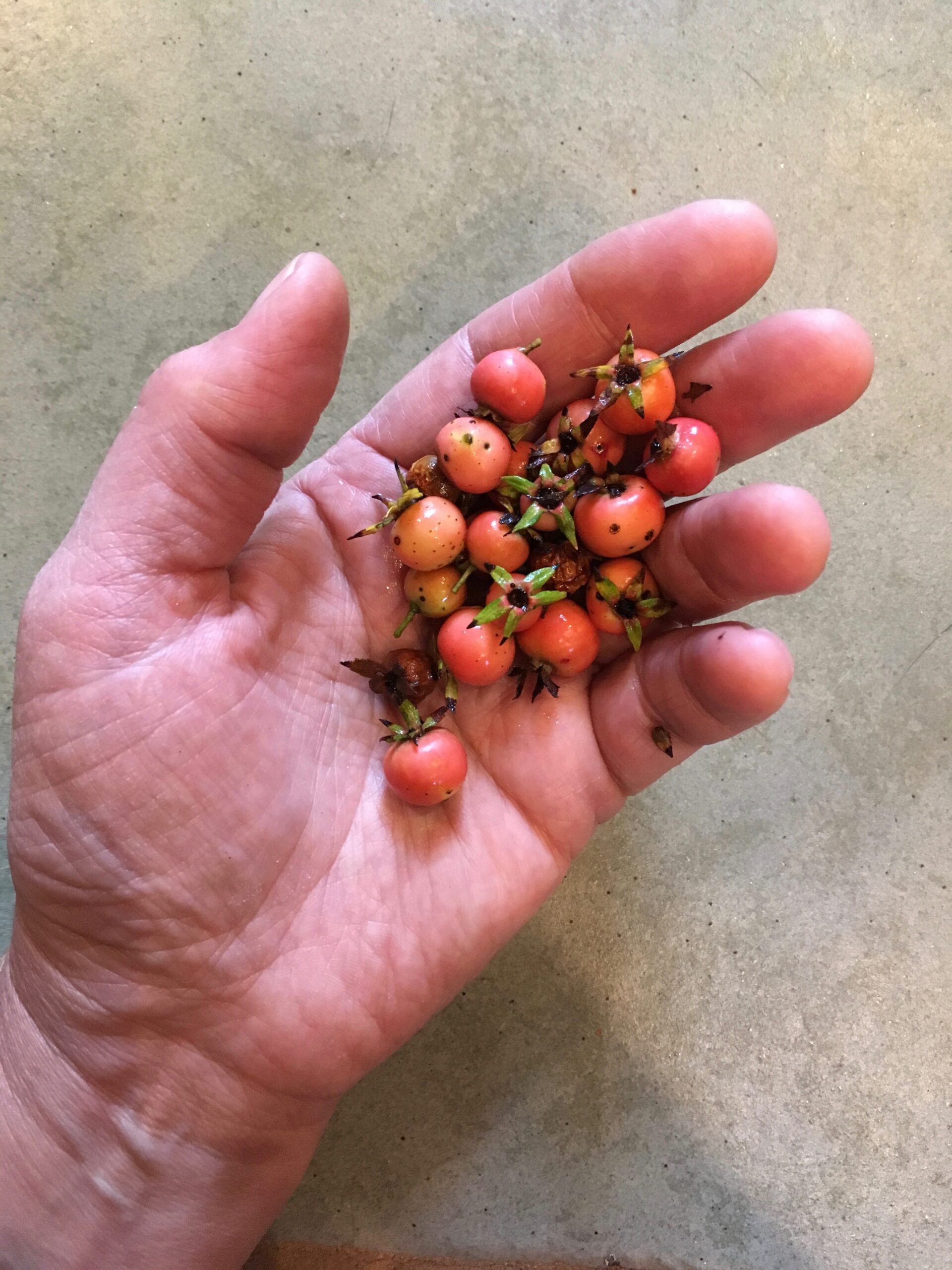
Our southeastern habitats offer some amazing and strange fruits. We have berries of all colors in the fall, from the florescent mauve of the American Beauty Berry (on the right) to the alien-looking hot-magenta and burnt orange Heart's-a-Busting (below left.) After a muggy summer filled with a hospitable Southern-Style helping of insects and various fruits and seeds, the larder is far from bare for our winged friends if you were to plant one or two or more of these wonderful shrubs in the understory of your yard.
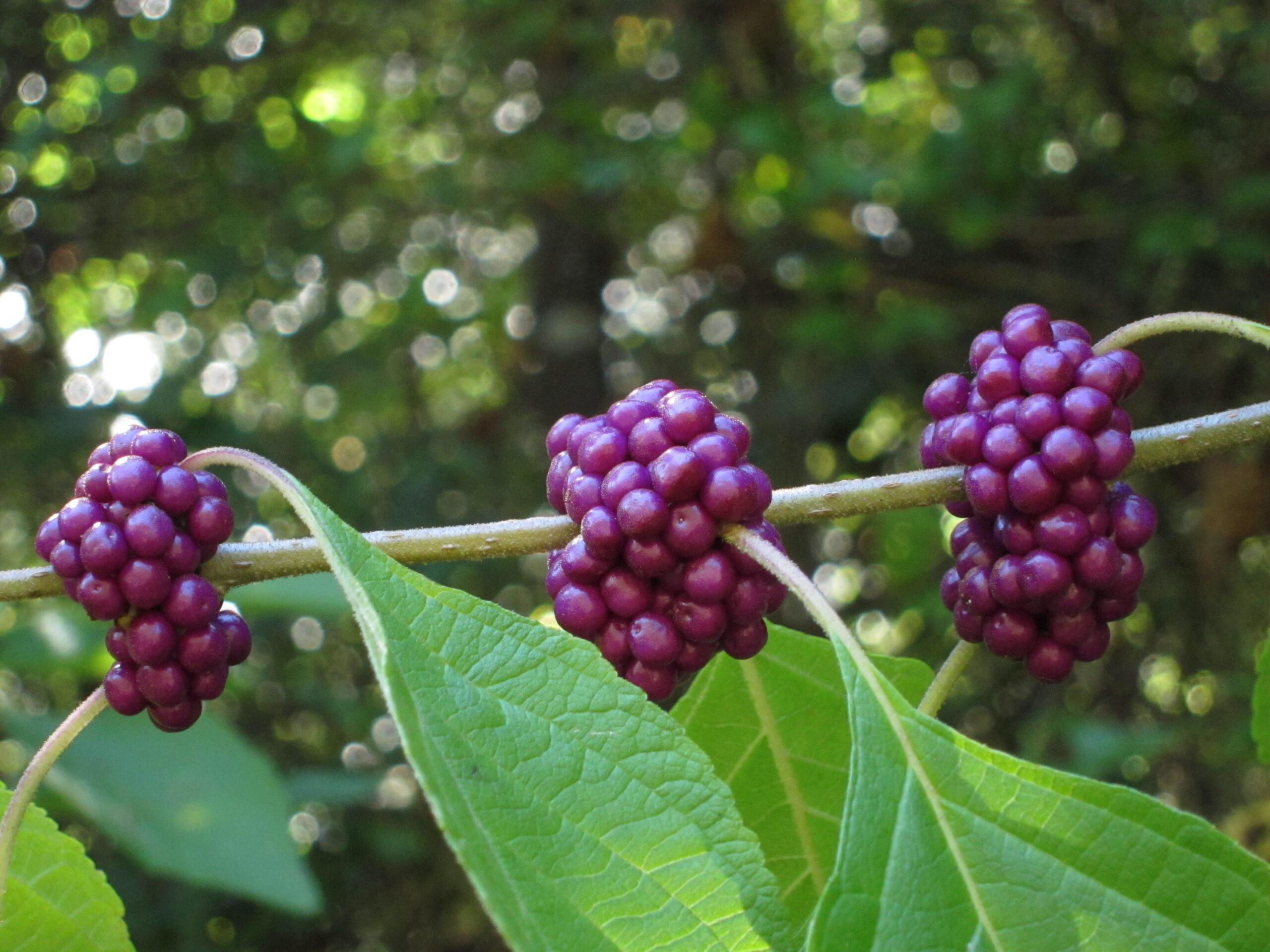
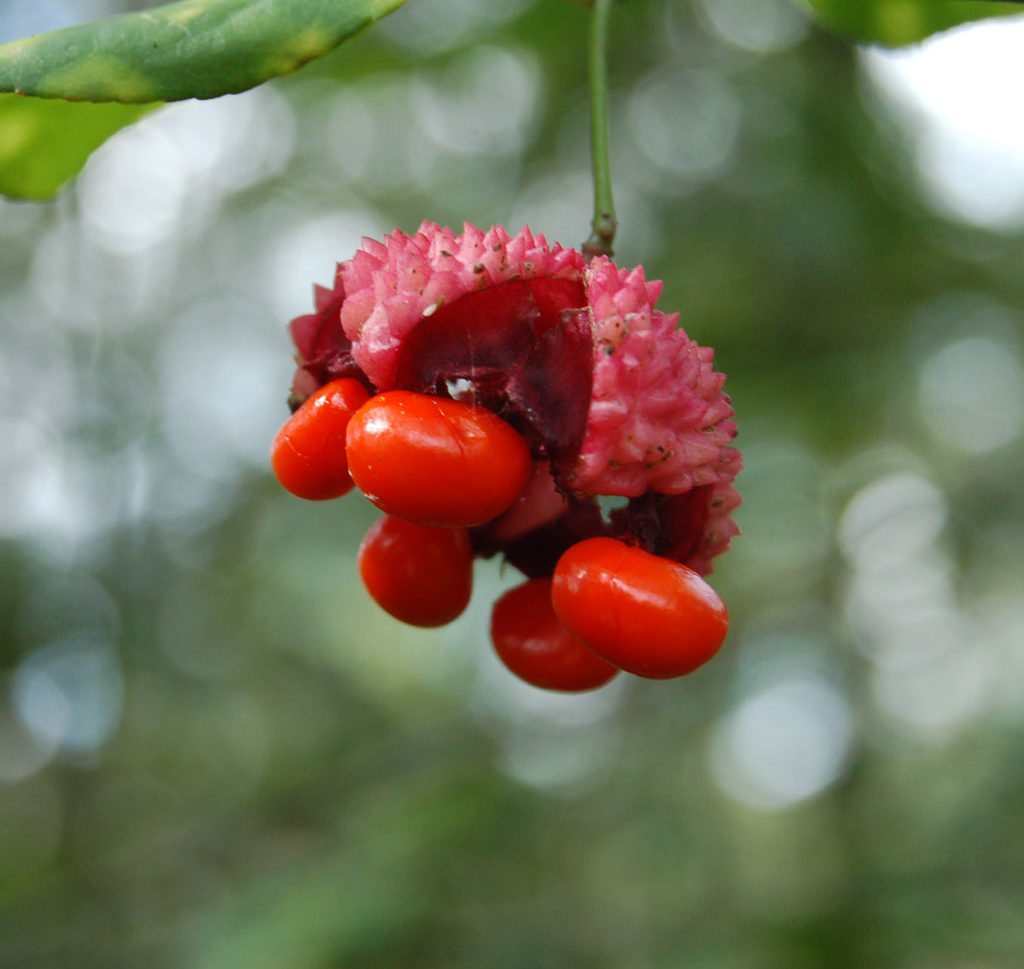
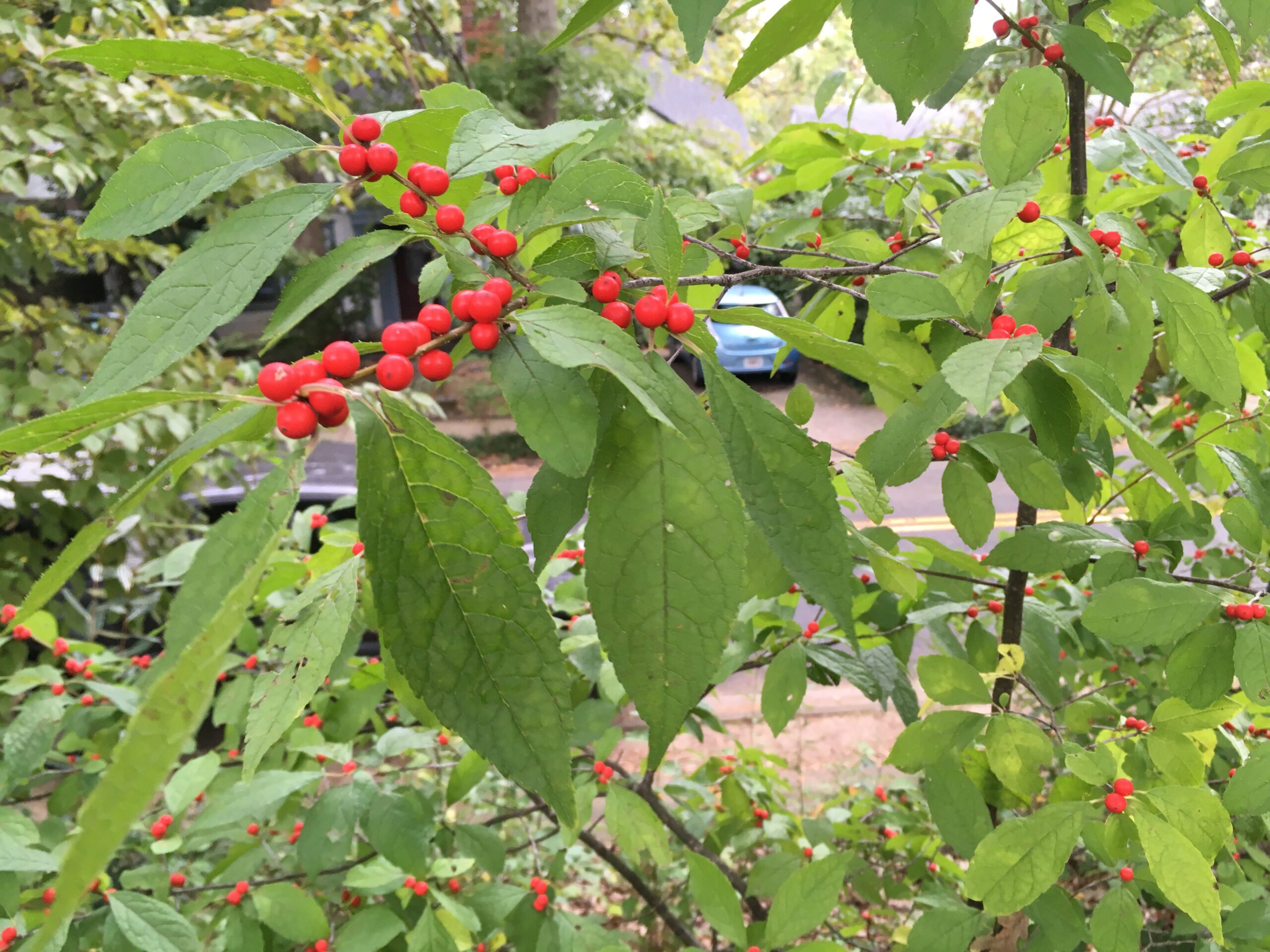
Above, branches full berries of Possum Haw, Ilex decidua, a deciduous holly, advertising their fall presence in a hot red.
The berries of some shrubs, like the Heart's-a-Busting, the Sparkleberry, and our deciduous Hollies, are voraciously consumed on the way down to the winter's tropical hangouts.
In the Georgia Piedmont our resident overwintering bird populations rely on the late berries, and winter persistent berries from our subcanopy shrubs.
In the early spring, migratory birds heading north need to eat as well. Have you heard the deafening chatter outside in the trees and in our parks over the past few weeks? You may have a migratory flock passing through your neighborhood. Question is, are there any groceries for them to nibble on? Cedar Waxwings like the winter persistent and prolific berries of our Red Cedar trees as they fly north from their wintering grounds. What the heck is winter persistent?
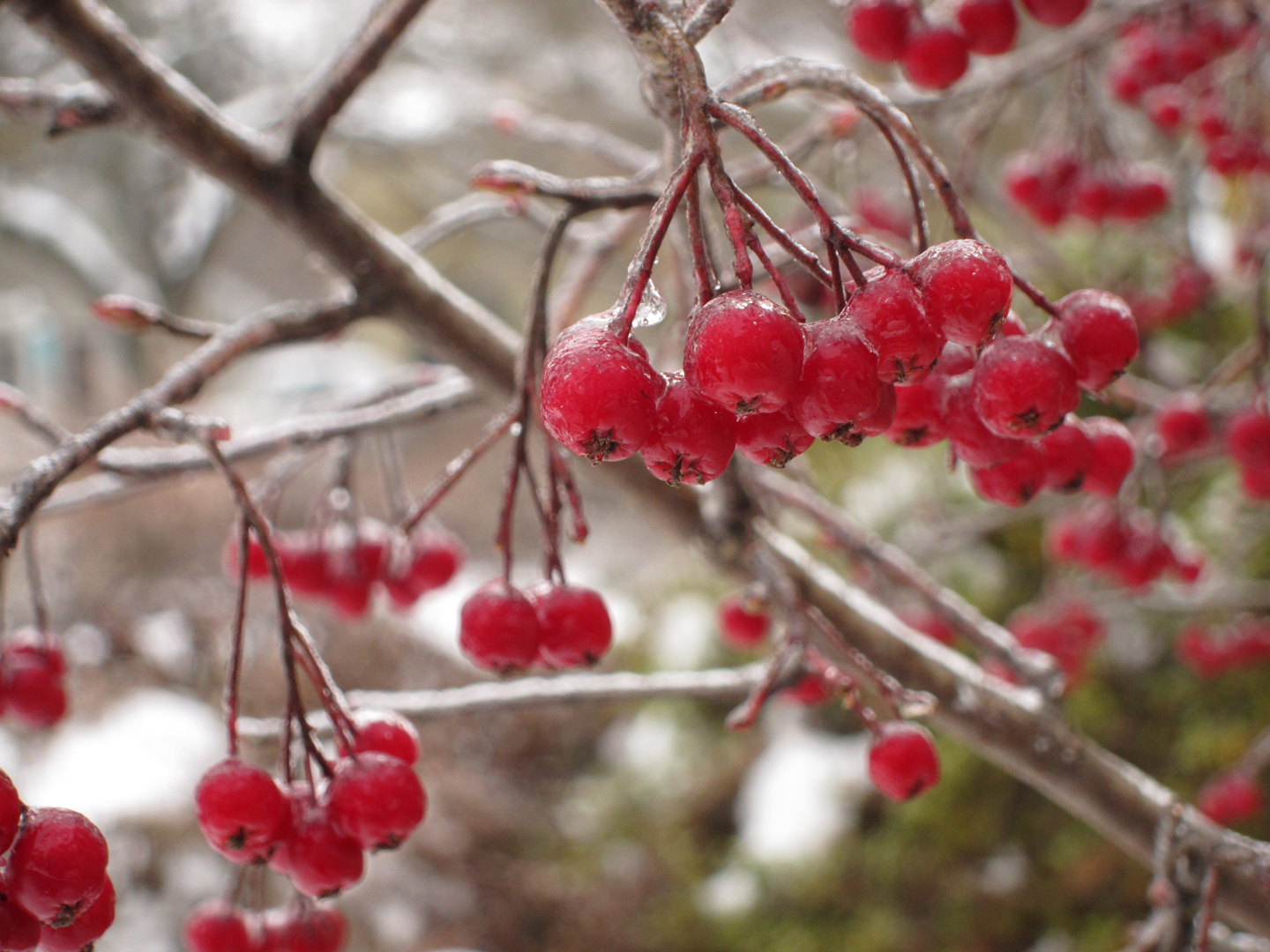
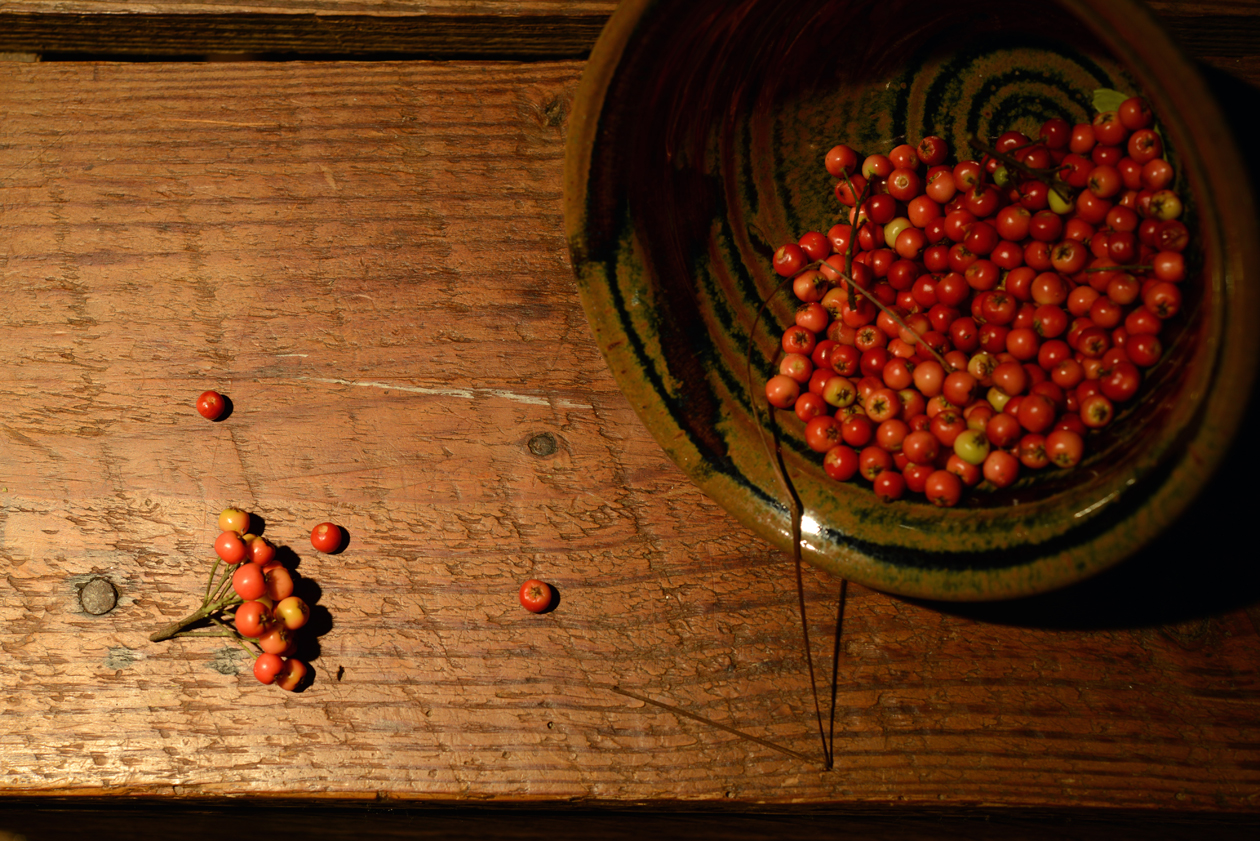
A bowl full of Red Chokeberries, awaiting fermenting, cleaning and sowing.
North American warbler species and other migratory birds heading south as well as the resident populations that overwinter in the Georgia Piedmont rely on the late berries from our subcanopy shrubs. The berries of some shrubs, like the Heart's-a-Busting, the Sparkleberry, and our deciduous Hollies, are voraciously consumed on the way down to the winter's tropical hangouts.
Berries that are not consumed immediately, but hang around throughout the winter are called winter persistent. These berries seem to need a bit of aging in the cold weather (or hunger) to be palatable. Beauty Berry seems to fall into this category. Other berries, such as the scarlet Red Chokeberry, seem to be ignored until the trip back north in the spring. The gorgeous Red Chokeberries in my side yard delight me all winter long until the Cedar Waxwings come through in the spring. Then the berries disappear in an hour's time.
